Click here and press the right key for the next slide.
(This may not work on mobile or ipad. You can try using chrome or firefox, but even that may fail. Sorry.)
also ...
Press the left key to go backwards (or swipe right)
Press n to toggle whether notes are shown (or add '?notes' to the url before the #)
Press m or double tap to slide thumbnails (menu)
Press ? at any time to show the keyboard shortcuts

Liberals vs Conservatives
[email protected]
3
‘liberals and conservatives possess different moral profiles regarding the five moral foundations’
Feinberg & Willer, 2013 p. 2
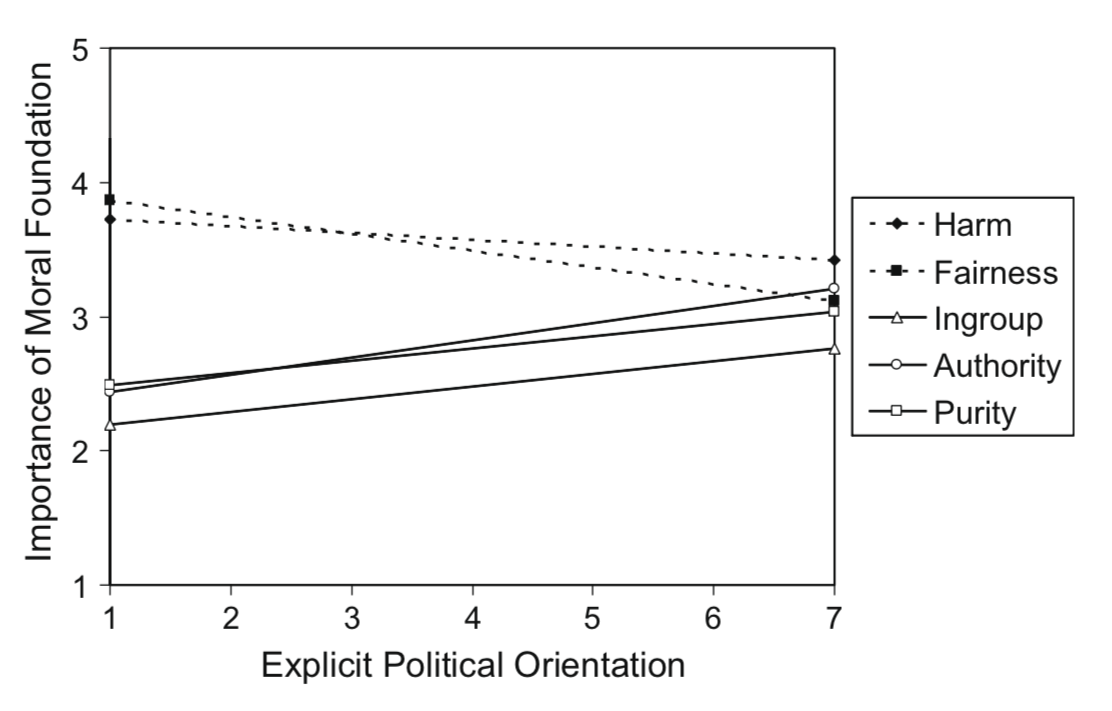
van Leeuwen & Parks, 2009 figure 1a
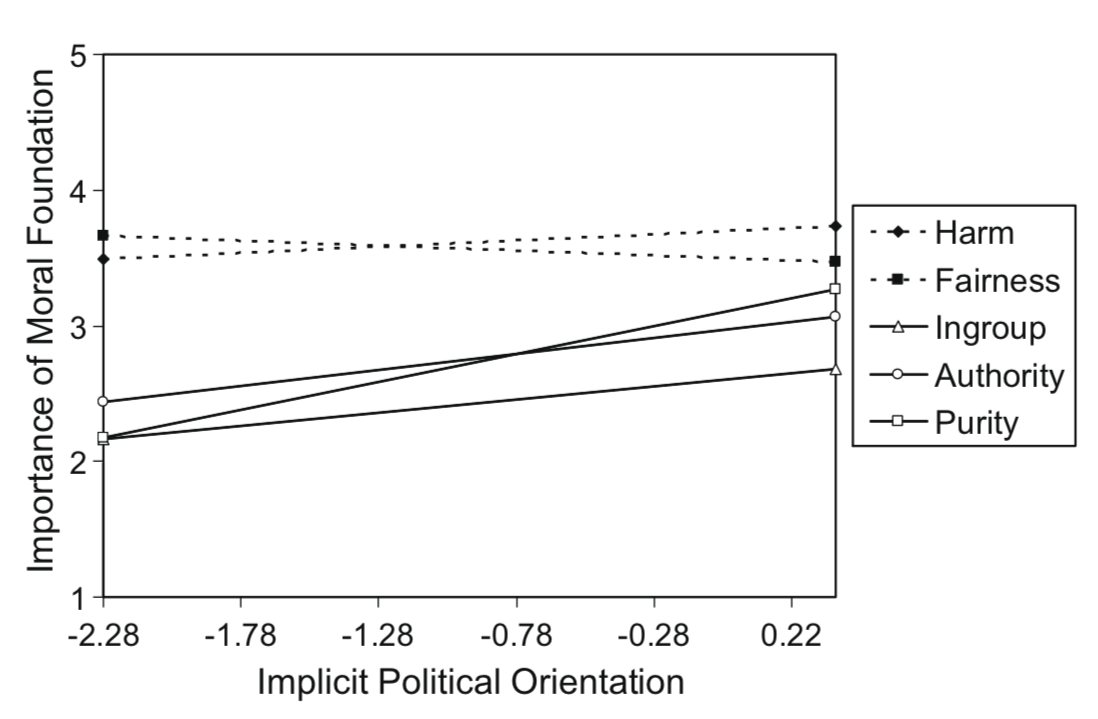
van Leeuwen & Parks, 2009 figure 1b
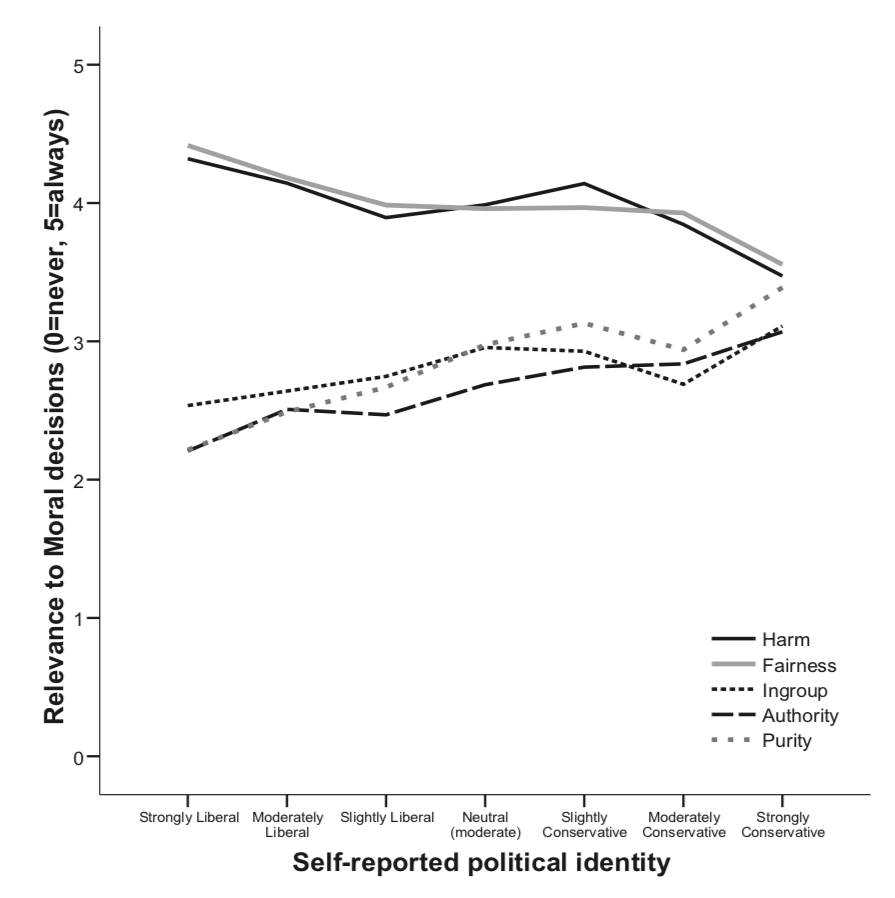
Graham et al, 2009 figure 1
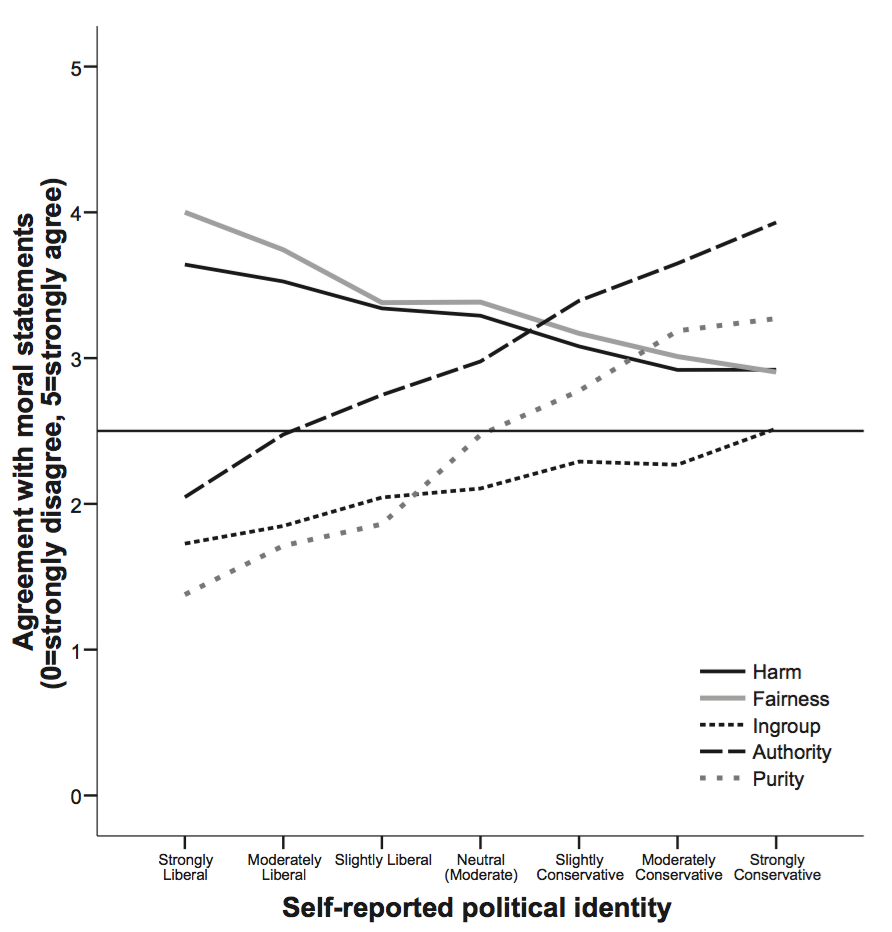
Graham et al, 2009 figure 3
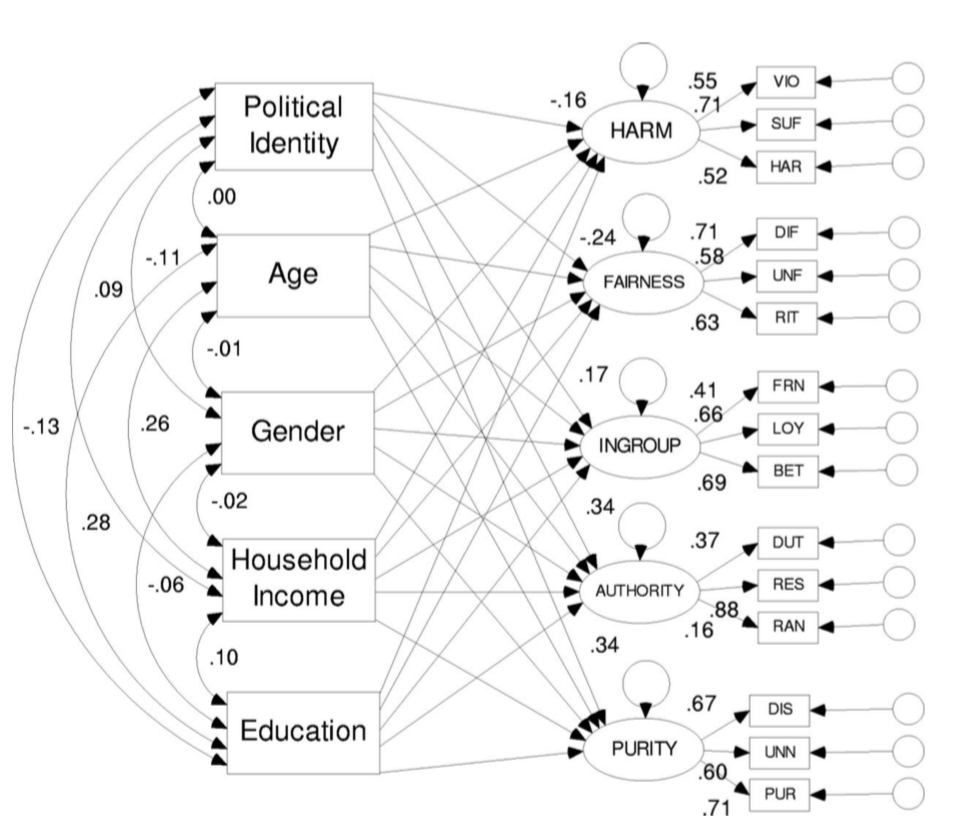
Graham et al, 2009 figure 2
3
‘liberals and conservatives possess different moral profiles regarding the five moral foundations’
Feinberg & Willer, 2013 p. 2
Is there any conflicting research? Yes!
‘all morality is understood through the lens of harm’ (Gray et al., 2012).
‘harm is central in moral cognition across moral diversity for both liberals and conservatives’ (Schein & Gray, 2015, p. 1158).
Our results are ‘more consistent with a common dyadic template than with a specific number of distinct moral mechanisms that are differentially expressed across liberals and conservatives’ (Schein & Gray, 2015, p. 1158).
‘loyalty, purity, industriousness, and social order [...] are best understood as “transformations” or “intermediaries” of harm, values whose violation leads to perceptions of concrete harm’ (Schein & Gray, 2018).
Is there even more conflicting research?
Davies et al, 2014
New Zealand
MFT model supported by Confirmatory Factor Analysis
Harm and Fairness not linked to socially conservative/liberal.
‘We hypothesized that the binding moral foundations would show a weaker relationship with political conservatism in Black people than in White people. Across two independent samples, we found support for this hypothesis’
‘some of the current items may conflate moral foundations with other constructs such as religiosity or racial identity.’
Davis et al, 2016

Graham et al, 2009 figure 1
Are the differences in means measurement artefacts?
On balance, this seems likely.
There is a risk of building a theory on measurement artefacts.
‘entire literatures can develop on the basis of faulty measurement assumptions.’
Davis et al, 2017 p. 128
Stop.
On balance, MFT seems to be supported by a growing body of evidence.
Although limited, MFT is probably useful and there is no better alternative.
Is there any conflicting research? Yes, plenty!
3
‘liberals and conservatives possess different moral profiles regarding the five moral foundations’
Feinberg & Willer, 2013 p. 2